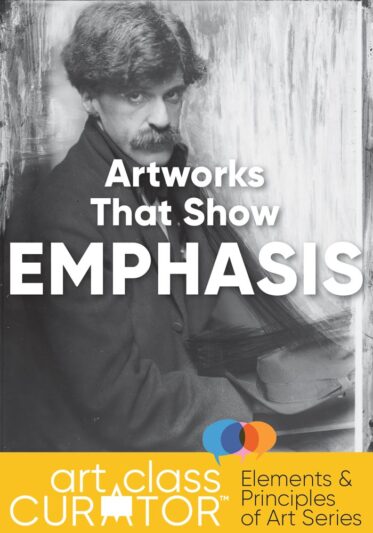Here’s another Elements and Principles of Art list to help you in planning your art lessons! Today’s post includes example artworks for emphasis in art.
It was hard to break this one down to categories, because chances are if the artwork shows emphasis well, it usually used more than one element or principle to do so. So, I have put the elements and principles of art that the artist used to show emphasis in art in parenthesis next to the artwork.
I will add to this list when I find more, so this is a good one to pin or bookmark! The horizontal images do not contain all of the examples.
Download the Free Elements and Principles Printable Pack

This pack of printables was designed to work in a variety of ways in your classroom when teaching the elements and principles of art. You can print and hang in your classroom as posters/anchor charts or you can cut each element and principle of art in its own individual card to use as a lesson manipulative.

Emphasis in Art Examples
- Grant Wood, Parson Weems’ Fable, 1939 (Line, Shape)
- Jonathan Borofsky, Walking to the Sky, 2004 (Line, Movement)
- Francisco Goya, The Shootings of May Third 1808, 1814 (Value, Color, Line)
- Jean-Honoré Fragonard, The Swing, 1767 (Complementary Color, Movement)
- Leonardo da Vinci, The Last Supper, 1494-99 (Balance, Line, Space)
- Richard Anuszkiewicz, Deep Magenta Square, 1978 (Color, Line, Shape, Light)
- Albert Bierstadt, Sunrise on the Matterhorn, after 1875 (Size, Space, Light, Contrast)
- Georges de La Tour, St. Joseph the Carpenter, c. 1645 (Contrast, Value, Light)
- Andrew Wyeth, Christina’s World, 1948 (Space)
- George C. Ault, Sullivan Street, Abstraction, 1924 (Contrast, Shape, Line, Color, Light)
- Rembrandt van Rijn, Militia Company of District II under the Command of Captain Frans Banninck Cocq, known as the ‘Night Watch’, 1642 (Line, Value, Movement)
- Edgar Degas, The Star, ca. 1878 (Shape, Balance, Line, Movement)
- Andy Goldsworthy, Circles, Varied (Shape, Color, Value)
- Ancient Egypt, Nebamun Hunting in the Marshes, ca. 1350 B.C.E. (Scale/Size, Line)
- Fra Bartolommeo, Savonarola, 16th century (Light, Contrast)
- Jean Arp, Enak’s Tears (Terrestrial Forms), 1917 (Color, Shape)
- Caravaggio, The Incredulity of Saint Thomas, 1601-02 (Composition, Line, Contrast, Light, Color)
- Alexander Calder, Saucers Skirting a Planet, 1968 (Shape, Color)
- Artemisia Gentileschi, Judith Slaying Holofernes, c.1620 (Line, Movement, Contrast, Value)
- Gertrude Käsebier, Portrait of Alfred Steiglitz, 1902 (Texture, Value)
- René Magritte, The Art of Living, 1967 (Shape, Space)

Elements and Principles Teaching Bundle
This extraordinary bundle includes the best resources for teaching each of the elements and principles—37 worksheets/handouts, 15 lessons (with accompanying PowerPoints and Handouts), 3 ready-to-go art analysis activities, 3 art analysis videos, and 13 elements and principle PDF articles.
There you have it! The best emphasis in art examples for your elements and principles of art lessons. Want more elements and principles of art examples? Check out the below posts.
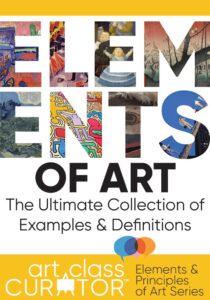





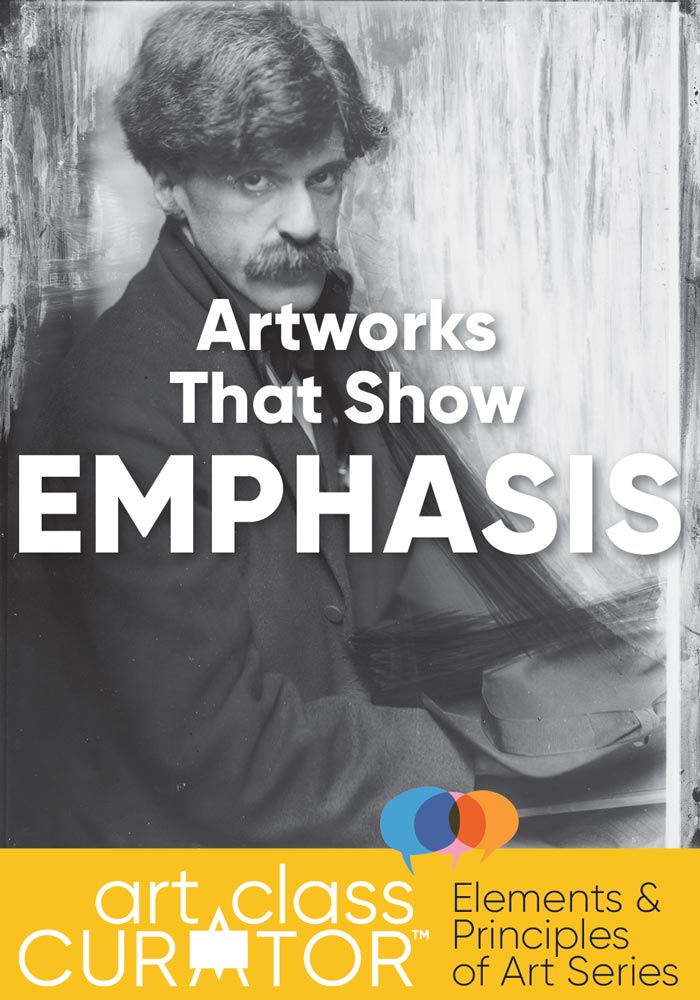

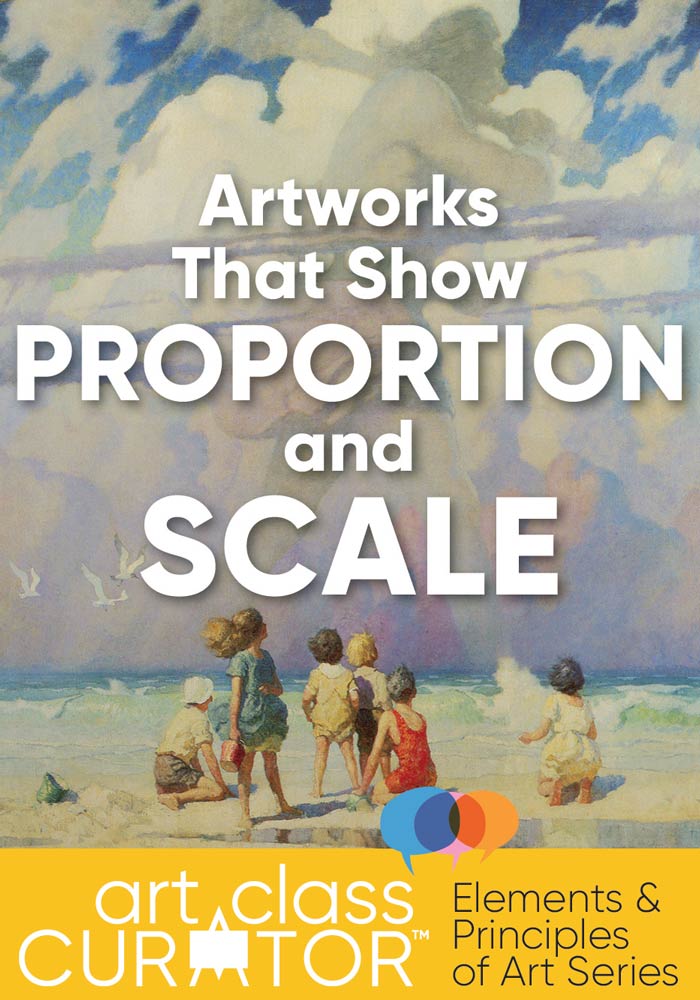

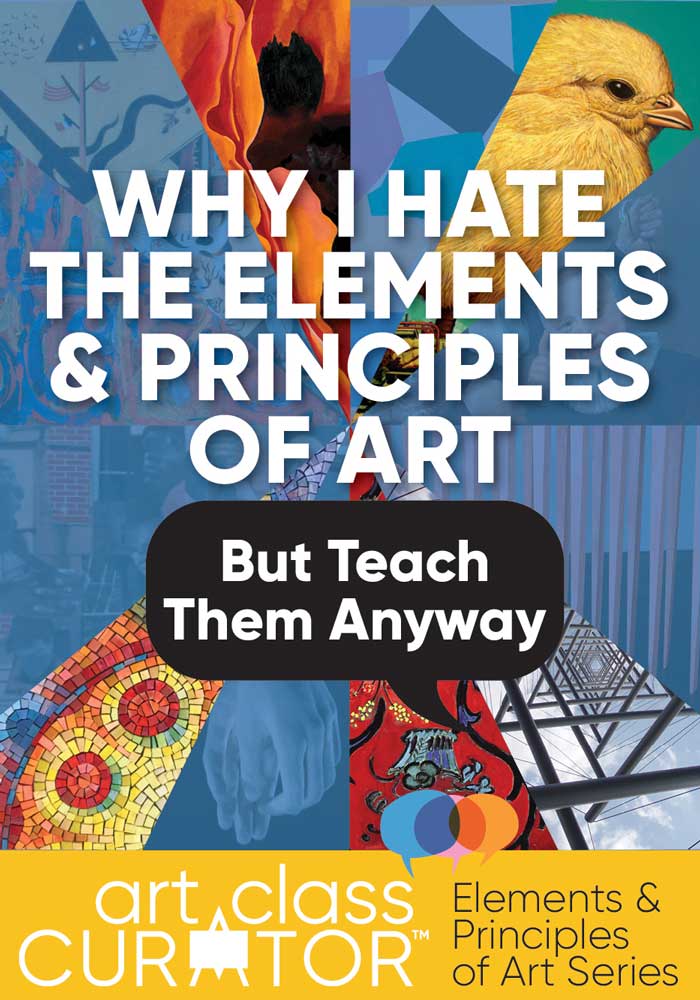

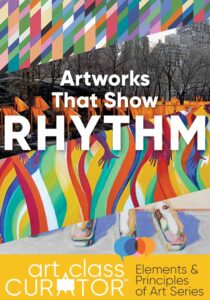
Photo Credits:
- Bernini’s Apollo and Daphne —
- Borofsky’s Walking to the Sky —

